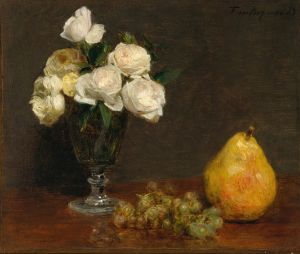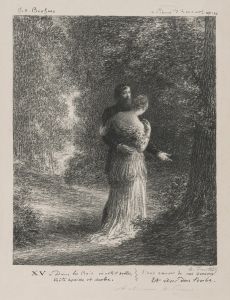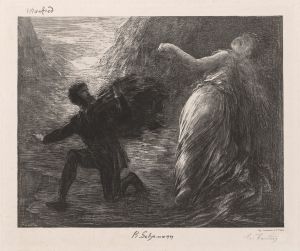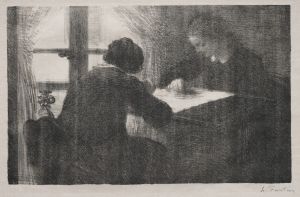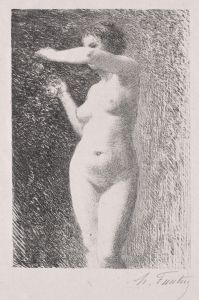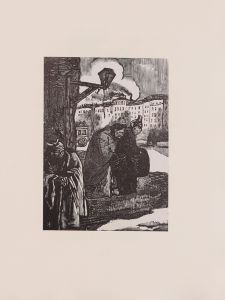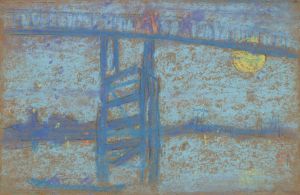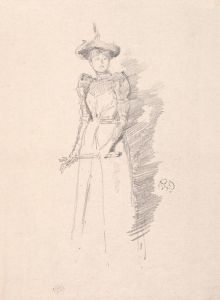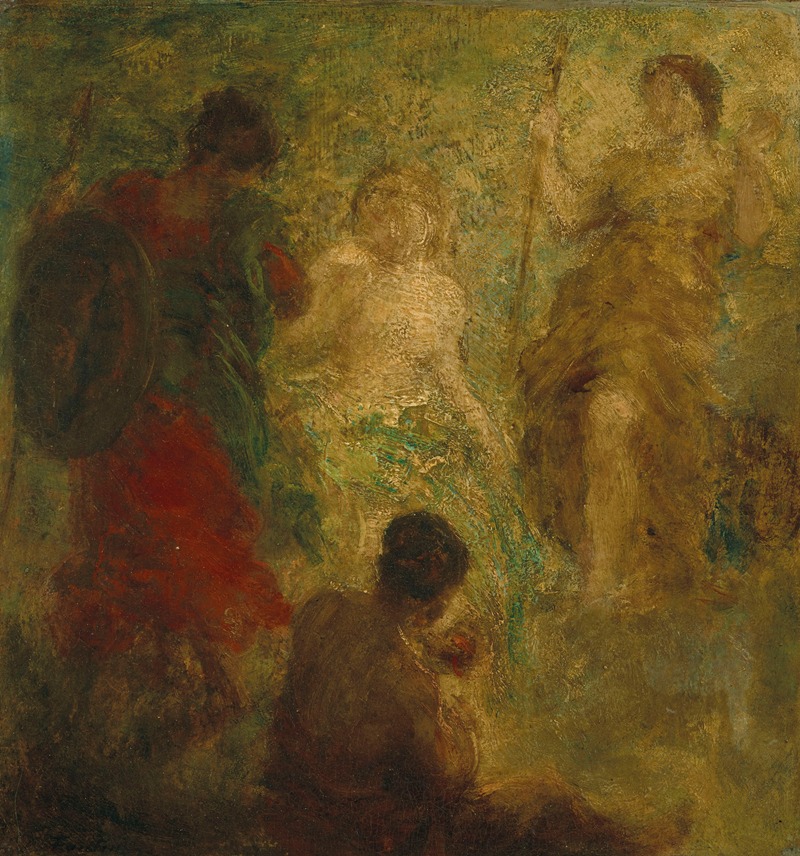
Le Jugement de Pâris
A hand-painted replica of Henri Fantin-Latour’s masterpiece Le Jugement de Pâris, meticulously crafted by professional artists to capture the true essence of the original. Each piece is created with museum-quality canvas and rare mineral pigments, carefully painted by experienced artists with delicate brushstrokes and rich, layered colors to perfectly recreate the texture of the original artwork. Unlike machine-printed reproductions, this hand-painted version brings the painting to life, infused with the artist’s emotions and skill in every stroke. Whether for personal collection or home decoration, it instantly elevates the artistic atmosphere of any space.
Henri Fantin-Latour, a French painter known for his still lifes and portraits, created "Le Jugement de Pâris" ("The Judgment of Paris") in 1902. This painting is one of his later works and reflects his interest in mythological and allegorical themes, which became more prominent in his career during the late 19th and early 20th centuries.
"The Judgment of Paris" depicts the mythological story from Greek mythology in which Paris, a mortal prince of Troy, is tasked with deciding which of three goddesses—Hera, Athena, or Aphrodite—is the fairest. The narrative is a pivotal moment in mythological lore, as Paris's choice ultimately leads to the events of the Trojan War. In the myth, Paris awards the golden apple to Aphrodite, who promises him the love of the most beautiful mortal woman, Helen of Sparta.
Fantin-Latour's interpretation of this mythological subject is rendered in a style that combines elements of Symbolism and Romanticism. The painting features a dreamlike quality, with soft, diffused lighting and an ethereal atmosphere. The figures of the goddesses and Paris are idealized, emphasizing their beauty and grace. Fantin-Latour's use of muted colors and delicate brushwork contributes to the otherworldly and poetic mood of the composition.
Unlike many of his contemporaries who focused on dramatic or action-filled depictions of mythological scenes, Fantin-Latour's "Le Jugement de Pâris" is more contemplative and serene. The artist's approach reflects his broader interest in creating works that evoke a sense of harmony and introspection. This painting is also notable for its departure from the still-life genre for which Fantin-Latour is best known, showcasing his versatility as an artist.
"Le Jugement de Pâris" is housed in the Musée d'Orsay in Paris, France, which holds a significant collection of 19th-century art. The painting is appreciated for its lyrical quality and its contribution to the Symbolist movement, which sought to convey ideas and emotions through symbolic imagery rather than direct representation.
Henri Fantin-Latour's work, including "Le Jugement de Pâris," continues to be studied and admired for its technical skill, emotional depth, and unique interpretation of classical themes.








